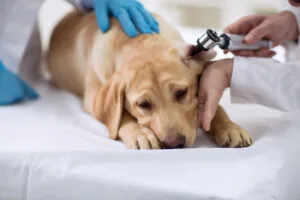Why Do Dogs Need Whiskers?
Dogs have whiskers, but have you ever wondered why they are so important? These long, stiff hairs are not just for show. They serve a critical role in your dog’s ability to navigate the world around them, acting as sensory tools that provide essential information about their surroundings. Whether you’re curious about how whiskers help with communication, movement, or even understanding your dog’s health, this blog will shed light on the fascinating world of canine whiskers.

What Is the Purpose of Dog Whiskers?
Whiskers are far more than just facial adornments for dogs. These specialized hairs are deeply embedded in the dog’s skin, connected to a rich network of nerve endings. This connection allows whiskers to act as sophisticated sensory organs, providing dogs with a heightened sense of touch that is far more sensitive than other parts of their body.
How Whiskers Function as Sensory Tools
Whiskers are sensitive to air currents, helping dogs detect nearby objects, even in the dark. As a dog approaches an object, their whiskers bend and send signals to the brain, aiding in navigation through tight spaces and assessing potential threats. This sensory ability is especially valuable for dogs with impaired vision, helping them gauge the size and shape of objects and navigate safely.
The Role of Whiskers in Dog Communication
Whiskers are not only important for navigation but also play a significant role in communication. When a dog feels threatened or excited, the position of their whiskers can change, sending clear signals to other animals or humans.
Reading Whisker Movements
By observing your dog’s whiskers, you can often tell how they are feeling. When a dog is relaxed, its whiskers will typically lie flat against its face. However, if the dog becomes alert or anxious, the whiskers will stand out more prominently. This involuntary movement can indicate a heightened state of awareness or agitation, giving you clues about your dog’s mood before they even bark or growl.
Conveying Your Dog’s Emotions
Moreover, whiskers can also signal happiness or excitement. When dogs are curious or intrigued, you may notice their whiskers pushing forward, as if reaching out to explore their surroundings. Paying attention to these movements can help you better understand your dog’s reactions to various stimuli.
Whiskers and Your Dog’s Well-being
Whiskers are more than just sensory and communication tools—they also play a role in maintaining your dog’s overall well-being. Because whiskers are so sensitive, they can be affected by a dog’s health and environment. Changes in the condition of your dog’s whiskers can sometimes indicate underlying health issues.
Recognizing Health Indicators
Healthy whiskers are usually strong and resilient. If you notice that your dog’s whiskers are breaking, falling out, or changing color, it could be a sign of an underlying health problem, such as skin conditions or nutritional deficiencies. While it’s normal for dogs to shed whiskers occasionally, significant changes should prompt a visit to the vet to rule out any serious concerns.
Should You Trim Your Dog’s Whiskers?
Many pet owners wonder if trimming their dog’s whiskers is a good idea. While some grooming practices may involve slight trimming for aesthetic reasons, it’s generally not recommended to cut your dog’s whiskers. Doing so can cause significant discomfort and disorientation for your pet. Since whiskers are deeply connected to a dog’s sensory system, any alteration can impair their ability to navigate and sense their environment, leading to increased stress and anxiety.
How Whiskers Help Dogs in Their Daily Lives
Whiskers contribute to various aspects of a dog’s daily life, from exploring their environment to interacting with other animals. These sensitive hairs help dogs assess the world around them, ensuring they can move confidently and safely in different situations.
Enhancing Spatial Awareness
Spatial awareness is necessary for dogs when they are navigating tight spaces, determining the proximity of objects, or even identifying the presence of other animals. Whiskers provide a heightened spatial awareness that helps dogs avoid obstacles and potential dangers, contributing to their safety and well-being.
Detecting Movement in Their Surroundings
Additionally, whiskers assist in hunting and play activities by allowing dogs to detect movement and changes in their surroundings. This sensitivity to movement is especially important for working dogs, such as those involved in search and rescue or herding, as it enhances their ability to perform tasks efficiently.
The Science of How Whiskers Work
The science behind whiskers is fascinating, as these hairs are much more than just a part of a dog’s coat. Whiskers are deeply rooted in the skin and are surrounded by blood vessels and nerves, making them highly sensitive to touch. This sensitivity is why dogs rely on whiskers for critical information about their environment.
The Anatomy of Whiskers
Each whisker is connected to a follicle, which is richly supplied with nerves. These nerves send sensory information to the dog’s brain, allowing them to detect even the slightest changes in their surroundings. The follicles themselves are surrounded by a muscle, which can adjust the position of the whisker, further enhancing their ability to gather sensory data. Whiskers are typically found in specific areas on a dog’s face, including above the eyes, on the muzzle, and beneath the chin. Each set of whiskers serves a unique purpose, contributing to a dog’s overall sensory experience.
The Importance of Whiskers in Your Dog’s Daily Life
Your dog’s whiskers provide valuable insights into their behavior, communication, and overall well-being. These specialized hairs are special tools that help dogs navigate their environment, communicate their feelings, and maintain their health. By paying attention to your dog’s whiskers, you can better understand their needs and provide the care they require. If you have concerns about your dog’s whiskers or notice changes in their condition, call Shallowford Animal Hospital at (336) 945-4412 or schedule an appointment.
Share This Post
Recent Posts
About Shallowford Animal Hospital
Shallowford Animal Hospital and The Pet Spa at Shallowford are dedicated to the exceptional, compassionate care your pet deserves. Pets hold a very special place in our families, and we treat yours like our own.



